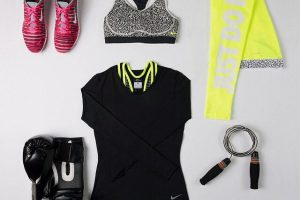In recent times, the concept of home fitness has gained immense popularity, driven by convenience, privacy, and the desire for a consistent workout routine. Transforming a part of your living space into a personal gym allows you to pursue your fitness goals at your own pace and on your own terms. In this comprehensive guide, we will explore the various aspects of setting up a home gym, from selecting the right equipment to optimizing the space for an effective workout regimen.
The Foundation: Choosing the Right Space
Before diving into the world of home fitness equipment, it’s essential to identify an appropriate space within your home. This could be a spare room, a corner of a larger room, or even a section of your garage. Consider factors like ventilation, lighting, and proximity to amenities like a bathroom or water source. Adequate space and a conducive environment are fundamental for a successful home gym.
Assessing Your Fitness Goals and Needs
Understanding your fitness objectives is pivotal in determining the type of equipment you’ll need. Are you aiming for cardiovascular fitness, muscle building, flexibility, or a combination of these? Tailoring your gym to your specific goals ensures that you invest in the right equipment and create a space that motivates you to stay committed to your fitness journey.
Cardiovascular Equipment: Building Endurance and Stamina
Cardiovascular exercises form the cornerstone of any fitness routine. They help improve heart health, boost metabolism, and enhance overall endurance. Consider incorporating the following cardiovascular equipment into your home gym:
Treadmill: Mimicking the Great Outdoors
A treadmill provides a versatile platform for walking, jogging, or running, allowing you to engage in effective cardiovascular workouts regardless of weather conditions or time constraints.
Stationary Bike: Pedaling to Fitness
Stationary bikes offer a low-impact, joint-friendly option for cardio workouts. They come in various styles, including upright, recumbent, and spin bikes, catering to different preferences and fitness levels.
Elliptical Trainer: Low-Impact Total Body Workout
Elliptical trainers provide a full-body workout with minimal impact on joints. They engage both the upper and lower body, making them an efficient choice for those seeking a well-rounded cardiovascular routine.
Rowing Machine: Strength and Cardio in One
Rowing machines combine strength training with cardiovascular benefits, making them an excellent addition for those looking to maximize their workout efficiency.
Strength Training Equipment: Building Power and Muscle
Strength training is essential for building muscle mass, improving metabolism, and enhancing overall strength and stability. When setting up a home gym, consider including the following strength training equipment:
Dumbbells: Versatile Free Weights
Dumbbells come in various weights and shapes, allowing for a wide range of exercises targeting different muscle groups. They are a versatile and space-efficient choice for strength training.
Barbells and Weight Plates: Classic Strength Building
Barbells, combined with a set of weight plates, are essential for compound exercises like squats, deadlifts, and bench presses. They are foundational for serious strength training.
Resistance Bands: Portable Powerhouses
Resistance bands offer a convenient and space-saving alternative to traditional weights. They provide adjustable resistance for a wide variety of exercises, catering to different fitness levels.
Multi-Functional Home Gyms: All-In-One Solutions
Multi-functional home gym machines integrate various strength training exercises into a single unit, making them ideal for those looking for a comprehensive workout experience.
Flexibility and Mobility Equipment: Enhancing Range of Motion
Flexibility and mobility are crucial components of a balanced fitness routine. They improve posture, reduce the risk of injuries, and enhance overall athletic performance. Consider incorporating the following equipment to support flexibility and mobility training:
Yoga Mat: Grounding for Mind and Body
A quality yoga mat provides a comfortable and non-slip surface for yoga, Pilates, and stretching exercises, allowing for a focused and enjoyable practice.
Foam Roller: Self-Myofascial Release
Foam rollers assist in self-myofascial release, helping to alleviate muscle tension and improve flexibility. They are an essential tool for post-workout recovery and maintenance.
Resistance Bands: Dynamic Stretching and Mobility
In addition to their role in strength training, resistance bands serve as effective tools for dynamic stretching and mobility exercises, promoting greater flexibility and range of motion.
Storage and Organization: Maximizing Space Efficiency
Organizing your home gym is key to creating an inviting and functional workout environment. Proper storage solutions ensure that equipment is easily accessible and neatly arranged, minimizing clutter and maximizing the available space.
Equipment Racks and Shelves: Neat and Tidy Storage
Invest in racks and shelves designed to hold weights, dumbbells, resistance bands, and other smaller items, keeping them organized and within reach.
Wall Hooks and Hangers: Utilizing Vertical Space
Utilize wall-mounted hooks and hangers to store items like yoga mats, resistance bands, and jump ropes, freeing up floor space and maintaining a clean and uncluttered workout area.
Safety and Maintenance: Prioritizing Well-Being
Safety is paramount in any fitness endeavor, and a home gym is no exception. Implementing safety measures and practicing proper equipment maintenance ensures a secure and enjoyable workout experience.
Flooring and Matting: Cushioning Impact
Select appropriate flooring or mats to provide cushioning and stability during workouts. This helps protect your joints and reduces the risk of injuries from slips or falls.
Mirrors: Form and Technique Check
Strategically placed mirrors allow you to monitor your form and technique during exercises, ensuring proper alignment and reducing the risk of injury.
Equipment Maintenance: Longevity and Performance
Regularly inspect and maintain your equipment to ensure it remains in safe and optimal working condition. This includes cleaning, lubricating, and tightening components as needed.
Conclusion: Your Personal Gym, Your Fitness Sanctuary
Creating a personal gym at home is a powerful investment in your health and well-being. It empowers you to take control of your fitness journey, providing a convenient and personalized space to pursue your goals. By carefully selecting the right equipment, optimizing your space, and prioritizing safety and maintenance, you can cultivate a fitness sanctuary that inspires and motivates you to achieve your best.
Remember, a home gym is a reflection of your commitment to a healthier, stronger, and more vibrant you. So, embark on this journey with enthusiasm, and let your personal gym be the catalyst for transformative fitness experiences. Elevate your workouts, surpass your limits, and revel in the rewards of a dedicated and flourishing home fitness routine!





Add Comment